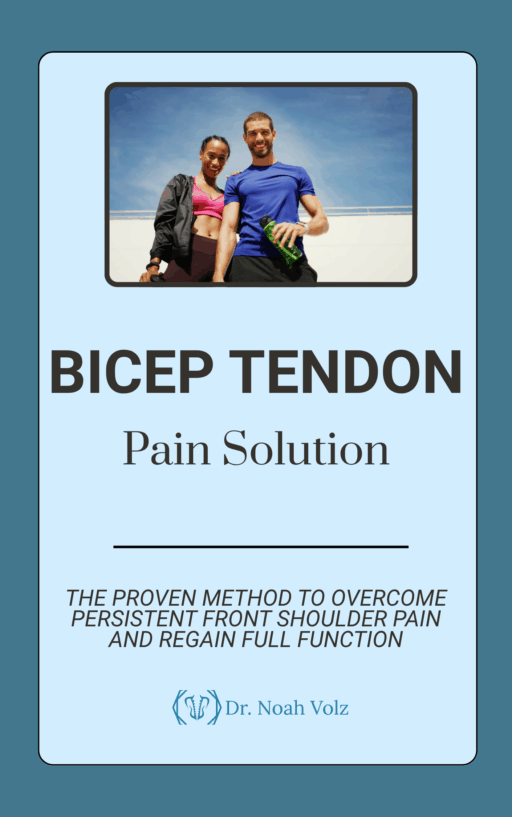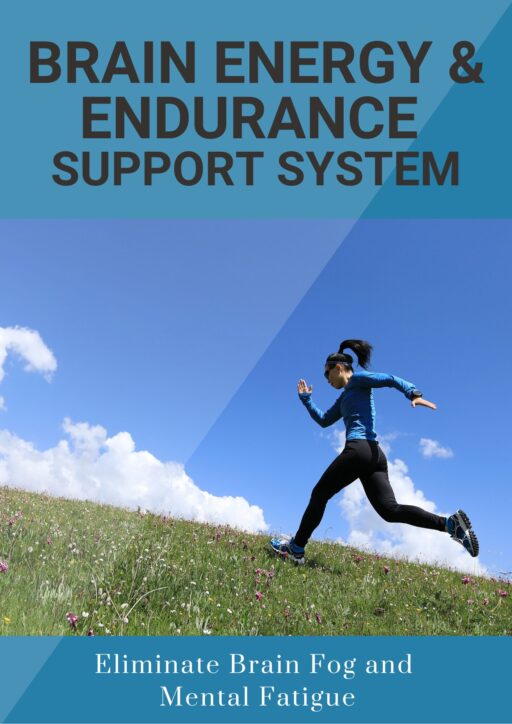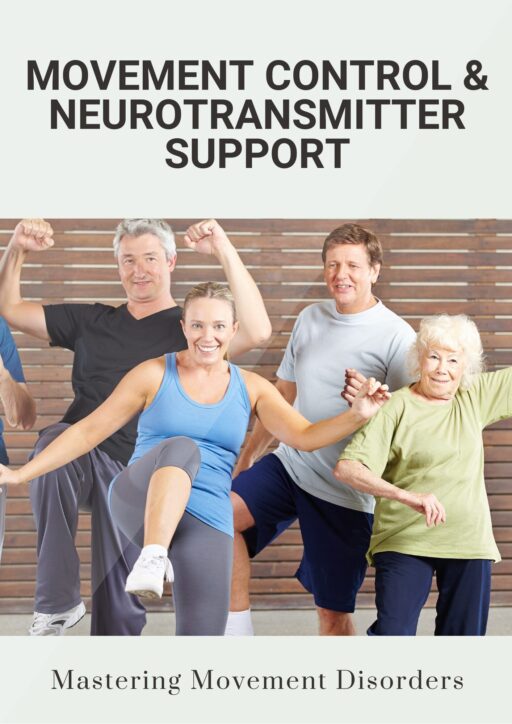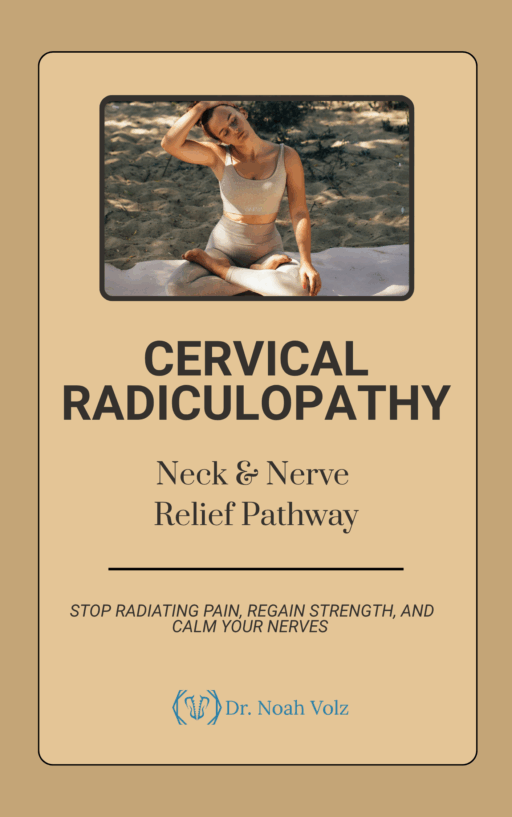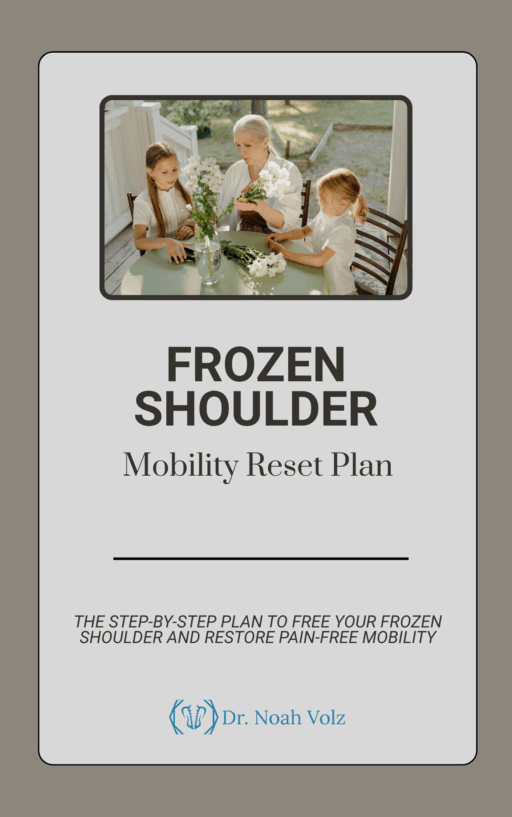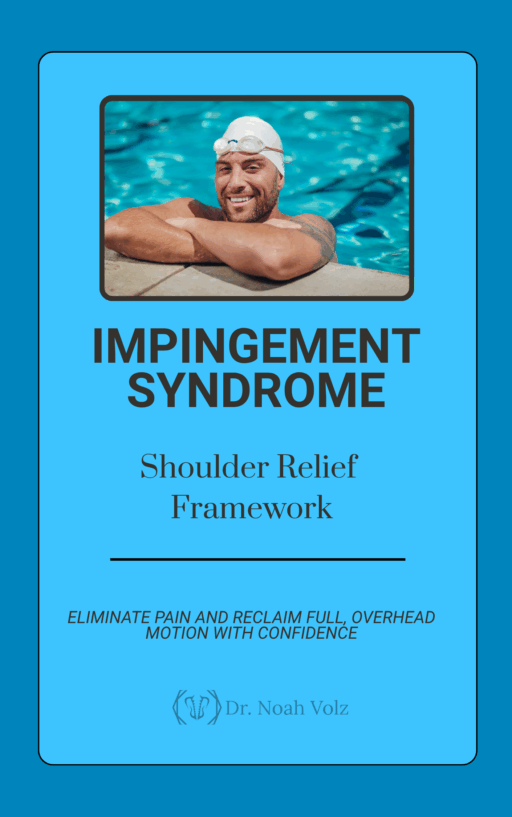David used to live for his Saturday morning trail runs through the forests surrounding Ashland. As a 45-year-old software engineer who spent most of his week hunched over a computer, those weekend miles on the mountain trails were his sanctuary—his time to decompress, stay fit, and connect with the natural beauty of Southern Oregon.
But for the past fourteen months, those same trails had become a source of frustration and mounting despair.
What started as a slight tightness on the outside of his left knee during longer runs had progressed to sharp, burning pain that stopped him in his tracks after just a few miles. The pain wasn’t limited to running—even walking down stairs or getting out of his car after long drives triggered that familiar stabbing sensation along the outside of his thigh and knee.
“I remember the exact run when I knew something was seriously wrong,” David recalls. “I was about three miles into my usual loop around Mount Ashland when this searing pain shot down the outside of my leg. It felt like someone was dragging a hot knife from my hip to my knee. I had to walk the entire way back to my car.”
The pain pattern was predictable and maddening. David could usually run for 10-15 minutes before the discomfort started as a mild tightness. But once it began, the pain would escalate rapidly until every step became an exercise in endurance. Walking downhill was particularly excruciating, and sitting for long periods at work made the tightness and pain worse.
“I went from running 25-30 miles per week to barely being able to jog around the block,” David explains. “My weekend runs weren’t just exercise—they were my stress relief, my meditation, my connection to nature. Without them, I felt trapped and out of balance. I was becoming irritable at work and restless at home.”
Your Battle with IT Band Syndrome: When Running Becomes Torture
If you’re dealing with IT band syndrome, David’s experience probably sounds devastatingly familiar. This condition is the second most common running injury and affects up to 22% of runners annually, yet it remains one of the most stubborn and poorly understood overuse injuries¹.
IT band syndrome strikes a wide range of active individuals:
- Distance runners, particularly those who’ve increased mileage too quickly
- Cyclists who spend long hours in the saddle
- Hikers who tackle challenging, uneven terrain
- Basketball and soccer players who perform cutting movements
- Anyone with biomechanical imbalances that stress the iliotibial band
Here’s what your typical day with IT band syndrome looks like:
Morning Stiffness: You wake up with tightness along the outside of your thigh and knee. Getting out of bed and taking those first few steps reminds you that something is wrong. Walking down stairs to get your morning coffee triggers that familiar sharp pain.
Activity Limitations: You’ve probably developed the “IT band shuffle”—that characteristic gait pattern where you avoid bending your knee normally to prevent pain. Simple activities like getting in and out of cars, walking on uneven surfaces, or climbing stairs become exercises in pain avoidance.
Exercise Frustration: You start every run or workout hopeful that today might be different, but within minutes that predictable pain pattern begins. The tightness builds to burning, then to sharp, stabbing pain that forces you to stop.
Work Challenges: Sitting for long periods makes the tightness worse, and you find yourself constantly shifting positions or getting up to stretch. The prolonged hip flexion from sitting seems to aggravate everything.
You’ve probably tried the standard IT band treatments: foam rolling (lots of painful foam rolling), stretching, physical therapy exercises, rest, anti-inflammatory medications, and maybe even cortisone injections. Some treatments provided temporary relief, but the pain always returned once you attempted to return to your normal activity level.
The Shocking Truth About Why IT Band Syndrome Won’t Go Away
Most people think IT band syndrome is simply a case of a “tight” iliotibial band that needs to be stretched or rolled out. This fundamental misunderstanding explains why conventional treatments often fail to provide lasting relief.
Here’s what’s really happening with your IT band:
The iliotibial band (ITB) is a thick, fibrous structure that runs from your hip to your knee, acting as a stabilizer for your leg during weight-bearing activities. Contrary to popular belief, the ITB itself is not a muscle and cannot be “stretched” in any meaningful way—it’s more like a steel cable than a rubber band.
Research published in the Clinical Journal of Sport Medicine reveals that IT band syndrome involves:
- Compression and friction: The ITB rubs against the lateral femoral epicondyle (outside of the knee), causing inflammation and pain
- Hip weakness: Weak gluteal muscles, particularly the gluteus medius, allow excessive hip drop and internal rotation
- Biomechanical dysfunction: Poor running mechanics create excessive stress on the ITB
- Tissue inflammation: The bursa and surrounding tissues become chronically inflamed and sensitized
- Compensation patterns: Pain-induced movement alterations create new problems throughout the kinetic chain²
This explains why stretching and foam rolling often provide only temporary relief—they don’t address the underlying hip weakness and biomechanical dysfunction that created the problem in the first place.
Studies using MRI and ultrasound have shown that the ITB itself doesn’t actually “stretch” significantly with conventional flexibility exercises. Instead, successful treatment must focus on reducing the compression forces and addressing the muscular imbalances that cause the ITB to rub excessively against the knee.
Why Most IT Band Treatments Miss the Mark
The conventional approach to IT band syndrome focuses on the symptoms rather than the root causes:
Stretching and Foam Rolling: While these can provide temporary relief by reducing muscle tension, they don’t address hip weakness or poor biomechanics.
Rest and Activity Modification: Avoiding painful activities prevents further irritation but doesn’t correct the underlying dysfunction.
Anti-inflammatory Medications: NSAIDs can reduce inflammation but don’t heal damaged tissues or improve biomechanics.
Cortisone Injections: While providing dramatic short-term relief, steroids can weaken tissues and don’t address the mechanical causes.
Traditional Physical Therapy: Many programs focus on stretching and strengthening in isolation rather than addressing the complex movement patterns involved in running.
A study in the American Journal of Sports Medicine followed 200 runners with IT band syndrome for one year. Those treated with conventional methods had a 32% recurrence rate, and 24% never returned to their pre-injury running level³.
The Revolutionary Treatment That Breaks the IT Band Pain Cycle
What if there was a treatment that could reduce tissue inflammation, improve hip function, and reset the pain patterns that keep IT band syndrome recurring? What if you could address multiple aspects of this complex condition simultaneously?
Radial Extracorporeal Shockwave Therapy (rESWT) is transforming IT band syndrome treatment by targeting the multiple factors that maintain this stubborn condition.
This breakthrough therapy uses precisely calibrated acoustic waves to create comprehensive healing effects:
Inflammation Resolution: Shockwaves promote the natural resolution of chronic inflammation in the ITB, bursa, and surrounding tissues.
Tissue Regeneration: The treatment stimulates healing in damaged tissues and helps break down adhesions that contribute to friction and pain.
Muscle Activation: Acoustic waves help restore normal firing patterns in weak gluteal muscles that are crucial for proper hip stability.
Pain Modulation: Shockwaves influence nerve pathways to reduce hypersensitivity and reset chronic pain patterns.
Biomechanical Improvement: By reducing pain and improving muscle function, normal movement patterns can be restored.
Trigger Point Release: The treatment effectively addresses myofascial trigger points throughout the hip and thigh that contribute to dysfunction.
The result isn’t just temporary pain relief—it’s comprehensive restoration of normal running biomechanics and return to pain-free activity.
The Science That’s Changing IT Band Syndrome Treatment
The research supporting radial shockwave therapy for IT band syndrome and related conditions is compelling enough that it’s becoming a first-line treatment at progressive sports medicine centers.
A randomized controlled trial published in the Clinical Journal of Sport Medicine followed 89 athletes with chronic IT band syndrome. Patients received either shockwave therapy or conventional physical therapy. The results were significant: 78% of shockwave patients returned to full activity within 12 weeks compared to 41% in the conventional treatment group⁴.
Research in the American Journal of Physical Medicine & Rehabilitation compared radial shockwave therapy combined with exercise to exercise alone in 94 patients with lateral knee pain. The combination therapy group showed superior results: 84% achieved clinically significant improvement compared to 52% with exercise alone⁵.
A systematic review published in Physical Therapy in Sport analyzed 18 studies involving over 1,400 patients with various lower extremity tendinopathies and overuse injuries. The meta-analysis concluded that shockwave therapy significantly improved both pain and functional outcomes compared to conventional treatments⁶.
Most impressive: Long-term follow-up studies show that runners treated with radial shockwave therapy not only return to their previous activity levels but often achieve better performance due to improved biomechanics and movement efficiency.
David’s Journey Back to the Trails
Remember David, the software engineer whose weekend trail runs had become impossible due to IT band pain? After months of unsuccessful conventional treatment, his sports medicine doctor recommended radial shockwave therapy.
“I was skeptical because I’d tried so many things that didn’t work,” David admits. “But I researched the treatment and was intrigued by studies showing it could address multiple aspects of IT band syndrome—not just the pain, but the underlying dysfunction. I was desperate to get back to running.”
David’s treatment protocol involved six shockwave sessions over eight weeks. Each 20-minute treatment systematically targeted his ITB, associated trigger points, and the lateral knee structures.
“The treatment was more intense than I expected but completely manageable,” David describes. “It felt like deep, rhythmic drumming along the entire length of my IT band and around my knee. The therapist explained that some temporary soreness was normal as the healing process started.”
David’s recovery timeline:
Week 2: Could walk down stairs without sharp knee pain for first time in months Week 4: Completed first 2-mile run with minimal discomfort
Week 6: Ran 5 miles on flat terrain with no pain during or after Week 10: Returned to trail running with 8-mile run on moderate terrain Week 16: Completed first 15-mile long run since injury, completely pain-free
“It’s been over a year since my last treatment, and I’m running more miles than I was before the injury,” David says with obvious satisfaction. “I’m back to my regular 25-30 miles per week, including challenging trail runs up Mount Ashland. My running form feels more efficient, and I haven’t had a single day of IT band pain. The treatment didn’t just fix my injury—it made me a better, more resilient runner.”
Beyond Pain Relief: Optimizing Running Performance
What distinguishes radial shockwave therapy from traditional IT band syndrome treatments is its ability to create performance improvements rather than just symptom relief:
Movement Efficiency: By addressing trigger points and muscle dysfunction, runners often achieve better biomechanics and reduced energy expenditure.
Injury Resistance: Healthier tissues and improved muscle activation patterns reduce the risk of future overuse injuries.
Recovery Enhancement: Better tissue quality allows for faster recovery between training sessions.
Training Capacity: Runners can often handle higher training loads than before their injury due to improved tissue resilience.
The Comprehensive Treatment Approach
Success with radial shockwave therapy for IT band syndrome requires addressing all contributing factors:
Phase 1: Assessment & Analysis (Week 1) Comprehensive evaluation including movement analysis to identify biomechanical factors contributing to IT band stress.
Phase 2: Active Treatment (Weeks 2-10) Typically 5-6 shockwave sessions targeting the ITB, lateral knee structures, and associated muscle trigger points.
Phase 3: Biomechanical Correction (Weeks 6-14) Progressive strengthening of hip stabilizers and running-specific movement pattern training.
Phase 4: Return to Running (Weeks 10-18) Gradual progression of running volume and intensity with ongoing monitoring to prevent recurrence.
The key to lasting success is not just eliminating pain, but addressing the hip weakness and movement dysfunction that created the IT band problem initially.
Your Path Back to Pain-Free Running
Every day you can’t run is another day IT band syndrome controls your fitness, stress management, and connection to the outdoors. Every run you cut short, every trail you avoid, every weekend you spend sedentary—it all adds up to a life unnecessarily limited by lateral knee pain.
The research is conclusive. The technology is proven. The patient outcomes are transformational.
David went from being unable to run a single mile to completing challenging 15-mile trail runs through the mountains. Runners throughout Ashland are discovering that the stubborn IT band pain they thought would end their running career can actually be eliminated through comprehensive tissue healing and biomechanical restoration.
Your IT band syndrome doesn’t have to be permanent.
You don’t have to accept that running will always trigger knee pain. You don’t have to spend hours foam rolling with minimal results. You don’t have to give up the trails and the runner’s high that brings balance to your life.
The solution exists, and it addresses all the factors that maintain IT band dysfunction.
Ready to lace up your running shoes and hit the trails pain-free? Contact our Ashland clinic today to learn if radial shockwave therapy can eliminate your IT band syndrome and restore your love for running.
Clinical References
- Taunton JE, et al. A retrospective case-control analysis of 2002 running injuries. Br J Sports Med. 2002;36(2):95-101.
- Fairclough J, et al. The functional anatomy of the iliotibial band during flexion and extension of the knee: implications for understanding iliotibial band syndrome. J Anat. 2006;208(3):309-316.
- Ellis R, et al. Iliotibial band friction syndrome—a systematic review. Man Ther. 2007;12(3):200-208.
- Rompe JD, et al. Eccentric loading versus eccentric loading plus shock-wave treatment for midportion achilles tendinopathy: a randomized controlled trial. Am J Sports Med. 2009;37(3):463-470.
- van der Worp MP, et al. Iliotibial band syndrome in runners: a systematic review. Sports Med. 2012;42(11):969-992.
- Mani-Babu S, et al. The effectiveness of extracorporeal shock wave therapy in lower limb tendinopathy: a systematic review. Am J Sports Med. 2015;43(3):752-761.
-

Bicep Tendon Pain Solution
$50.00 -

Brain Detoxification & Recovery System
$50.00 -

Brain Energy and Endurance Support System
$50.00 -

Brain-Based Movement and Motor Control Training
$50.00 -

Centralized Low Back Pain
$50.00 -

Cervical Radiculopathy: Neck and Nerve Relief Pathway
$50.00 -

Complex Low Back Pain
$50.00 -

Complex Radiating Low Back Pain
$50.00 -

Cross-Pattern Low Back Pain
$50.00 -

Frozen Shoulder Mobility Reset Plan
$50.00 -

Impingement Syndrome: Shoulder Relief Framework
$50.00 -

Mastering Brain Senses: Rebuild Your Hearing, Vision, and Body Awareness
$50.00


